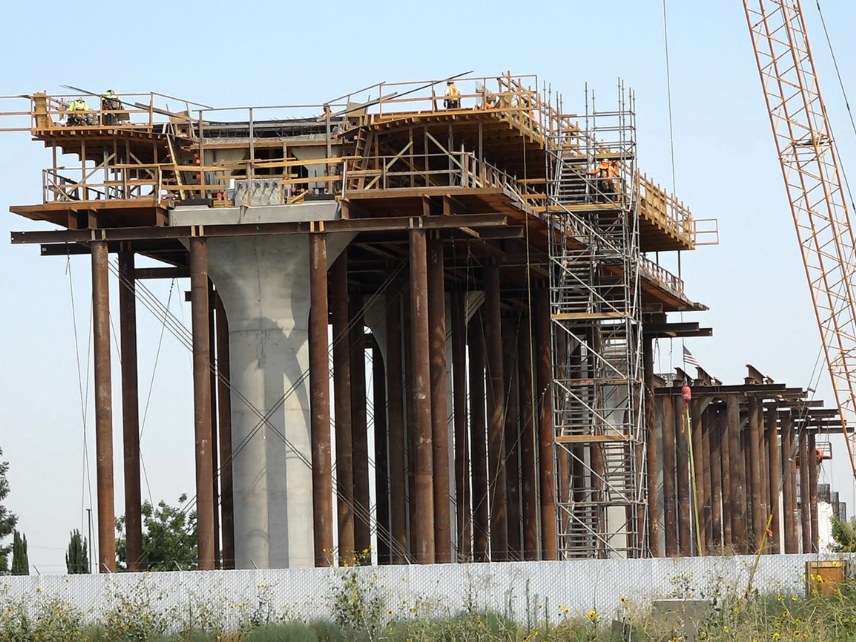Under California's New Governor, the Proposed Bullet Train May Get Cheaper but Also Dumber
Gavin Newsom wants to build only the top half.

Is half of a transportation boondoggle better than the whole thing? Or does that simply highlight how stupid the entire project is in the first place? When it comes to California's bullet train, residents may be about to find out.
Democratic Lt. Gov. Gavin Newsom handily won the race to succeed Gov. Jerry Brown, defeating Republican John Cox 60 percent to 40 percent.
Newsom didn't say much whle he was running about the fate of the California High-Speed Rail project. This effort has been a complete disaster since voters approved a $10 billion bond in 2008 to start a first leg of a train that is supposed to travel from San Francisco to Los Angeles in less than three hours. Costs have ballooned for just the very first (uncompleted) leg in the Central Valley, from $6 to $10 billion. Estimates for the entire project have jumped from $64 to $77 billion—and really, if the entire thing ever is fully built, it will likely cost well over $100 billion.
The entire project has been handled dishonestly. Proponents have insisted that it would bring in private investors and would not be a drain on the taxpayers. There's no sign any of that is actually going to happen or that the train will be able to operate without significant government subsidies.
Newsom actually spoke out against the project's continuation in 2014. But when he decided to run for governor, he shut his mouth about it. He actually refused for two years to discuss the train's future with the Los Angeles Times.
In October, he finally made a decision. A "split the baby" compromise that will probably satisfy nobody, it highlights how little the project matches what was sold to voters. Newsom told the Times that he intends to scale the bullet train back and only continue construction on the northern half of the line. The rest of the train—from the San Joaquin Valley down to Los Angeles—will have to wait until it can "attract more money from taxpayers or private investors."
Newsom insists that a bullet train that only transports people from San Francisco to Fresno is not a "train to nowhere," and that it would allow tech workers to commute to Silicon Valley from Merced, Modesto, or some other outlying community.
This fundamentally means that Newsom is demanding that the citizens of all California pay to solve San Francisco and Silicon Valley's housing problem for them instead of doing what actually needs to be done to make the city affordable—build more housing.
Californians were sold this train as a way to quickly traverse the length of the state. They were also sold it as something that could be used by many citizens, not just a chosen few. Granted, this was always a little absurd itself. The ticket prices to ride the train aren't actually going to be cheaper than taking a flight from Los Angeles to San Francisco, making for an expensive "commute." Still, a large cross-section of California's population was supposed to have access to the train, and that was supposed to justify statewide funding for it.
Newsom's plan ends up exposing what the train was really all about in the first place. There's very little need statewide for high-speed rail. It was intended to benefit a very select group of people—particularly those being paid to build it—on the public's dime.
So is half a bullet train preferable to Jerry Brown's stubborn insistence on building the whole thing? In the short term, at least, Californians will be spared the idea that the state is willing to blow billions on a project of dubious benefits.
But there's going to be a massive sunken-cost temptation here. If the top half of the train is built, there's going to be a lot of pressure to keep it going. And if the top half is not successful, many folks will say that the problem is that the train doesn't go all the way to Los Angeles.
For that matter, the ballot initiative Californians voted on was specifically for a train from San Francisco to Los Angeles. The construction has already made a mockery of the text of the initiative, but Newsom's plan does not even remotely resemble what voters endorsed.
There may be a big upside to Newsom's approach, though: He is acknowledging that California simply cannot afford to build what was promised. A ballot initiative being proposed for 2020 would stop any more spending on the rail project. Newsom's concession that the state doesn't have enough money to build the whole thing could be used as ammunition to kill it off at the ballot box.


Show Comments (71)